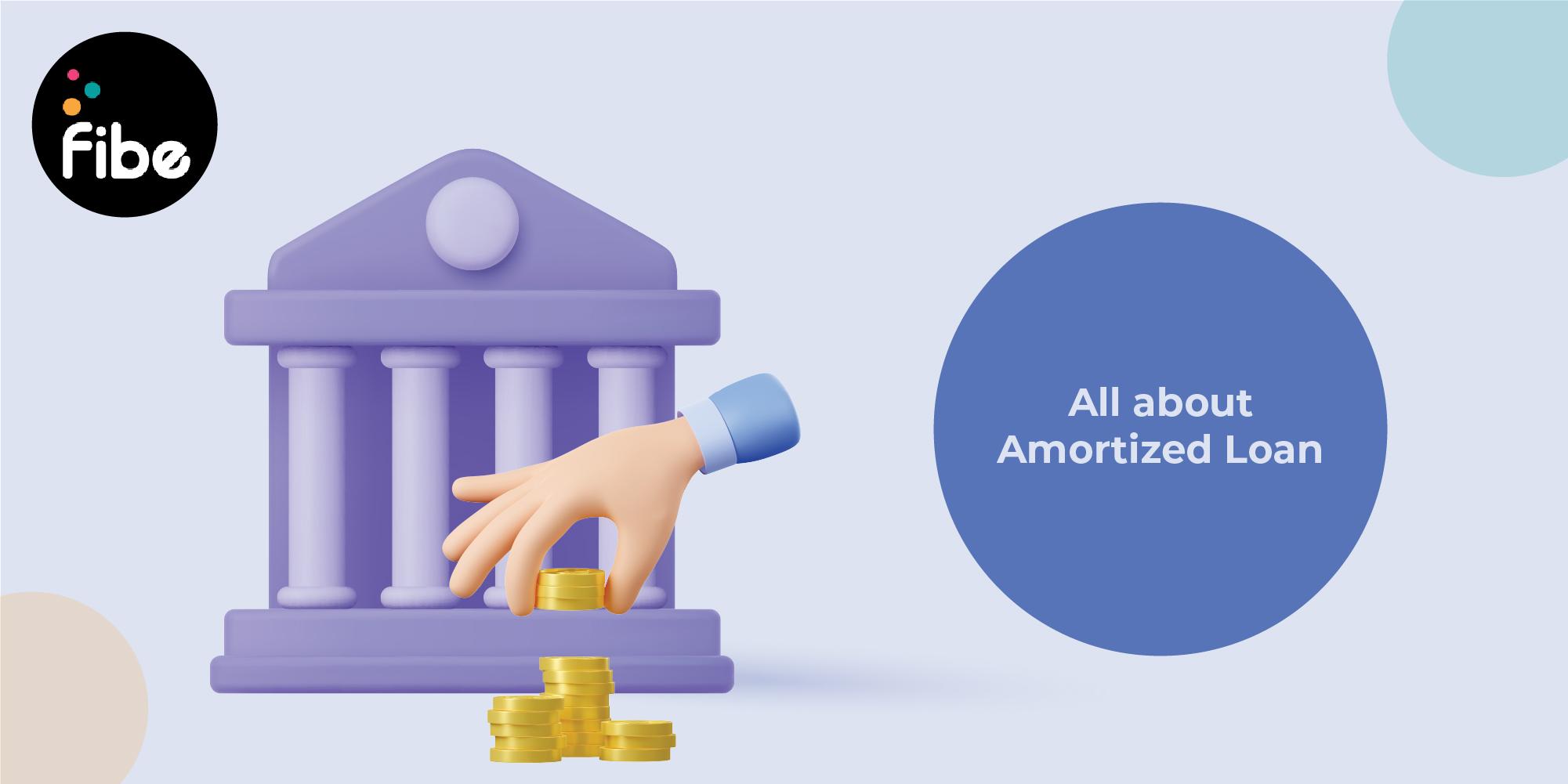- Home
- Blogs
- Personal Loan
- What Is Amortised Loans
Are Amortised Loans a better option? Things you should know
Reviewed by: Fibe Research Team
- Updated on: 30 Nov 2023
Reviewed by: Fibe Research Team

Amortised loans are one of the many repayment options offered by lenders. When you opt for a loan, one of the most important factors to consider is the EMI. It includes a portion of your interest and principal, which you need to repay on a fixed date every month.
Any form of credit, where your EMI amount stays fixed for the entire tenure, is known as an amortised loan. Here, lenders create a fixed repayment schedule with equal repayments.
Read on to know what is an amortised loan, its working process, how it differs from other options and more.
An amortised loan, meaning a loan with a repayment structure where the monthly repayment amount includes both interest and principal components, is quite common.
Here, you initially pay off the interest expenses. After this, you repay the principal amount by the end of the tenure, which makes the outstanding loan amount zero.
Personal loans, education loans and auto loans are a few examples of amortised loans. However, credit cards and mortgage loans are unamortised loans.
Apply For Instant Cash Loan Online
To understand the meaning of an amortised loan better, you need to know how it works. Firstly, the lender creates an amortisation schedule using principal, tenure, interest rates and other loan details.
This helps the borrower visualise how their EMIs get distributed across the tenure when they pay their dues. Simply put, the interest amortisation of a loan will help you calculate the monthly EMI with ease.
This type of loan repayment plan aims to clear most of the interest component initially. So, the interest amount makes up most of the EMI with the principal component low. As time passes, the principal component of an amortized loan increases. This way, both these loan components share an inverse relationship across the loan tenure.
In contrast to amortised payment plans, there are two other credit repayment options.
These are short-term loans, where only a portion of the principal loan amount is paid through EMIs, while the outstanding amount is paid in entirety at the end of tenure.
A credit card is a type of revolving debt where the borrower can use the credit within the sanctioned limit and pay the amount back without interest or with interest based on due dates. However, there is no fixed EMI amount and the borrower can withdraw more credit (within the limit) as and when required.
Here are the steps to calculate the amortisation of a loan:
Calculating such loan terms manually can be a tedious and time-consuming task. Therefore, using an online amortisation calculator is a better option.
Here are a few of the pros of this kind of loan and repayment structure:
Keeping these facts in mind, you can opt for an amortised loan over other repayment plans to avoid the burden of paying in a lump sum. If you need an easy financing solution, taking a Fibe Instant Personal Loan is a wise option. With Fibe, you can get a loan of up to ₹5 lakhs without much hassle. Download our Personal Loan App or register on our website to apply now.
Amortised loans follow a certain payment structure and may include education loans, car loans, personal loans, etc.
An amortised loan requires payment in regular monthly EMIs, where the first few payments are directed towards paying the interest charges. The amount you pay towards the interest component decreases as you make each payment in an amortised loan. In a fixed loan, your interest rate, thus, your interest amount, remains fixed throughout the loan tenure.
Amortisation refers to the spread of capital expenses over a fixed period. In a loan, 5% amortisation refers to 5% p.a. interest on the principal loan amount.
For all loans, interest amortisation calculation can be done using this formula:
Net Prepayments Amount = Principal × [(1+i) n−1i×(1+i) n].
Here, i is the interest rate charges and n is the tenure. You can also use online amortisation calculators for quick and easy calculations.